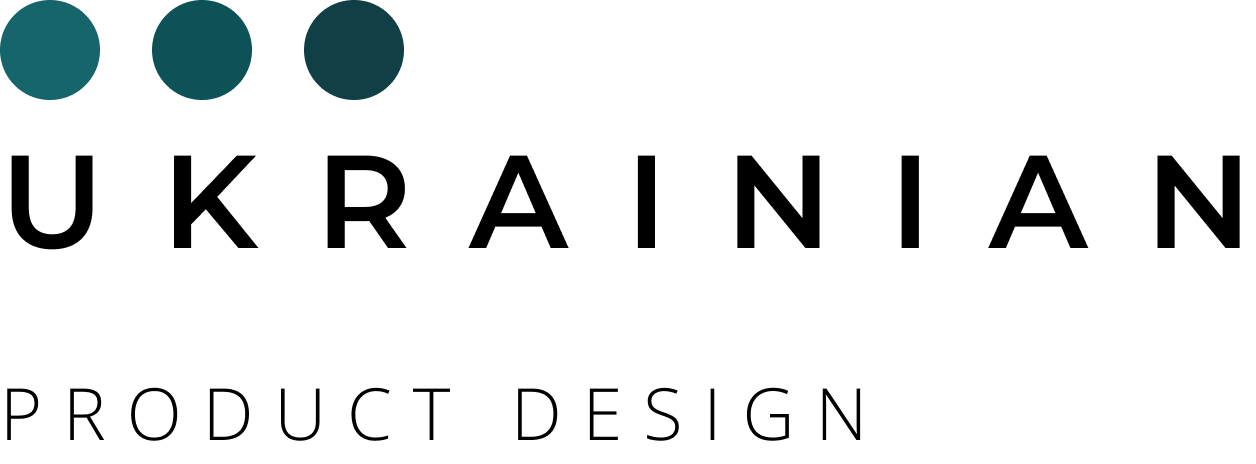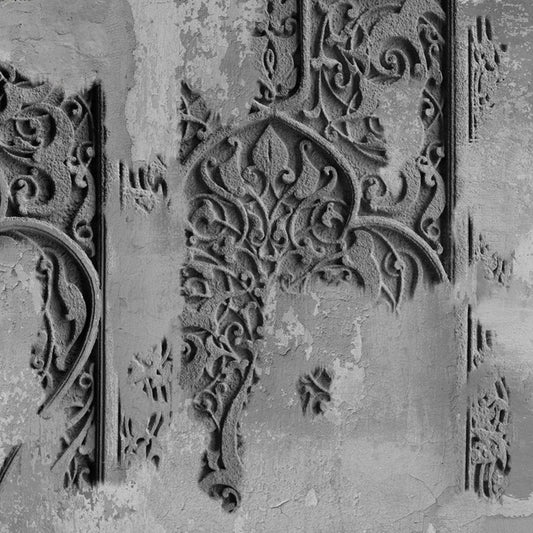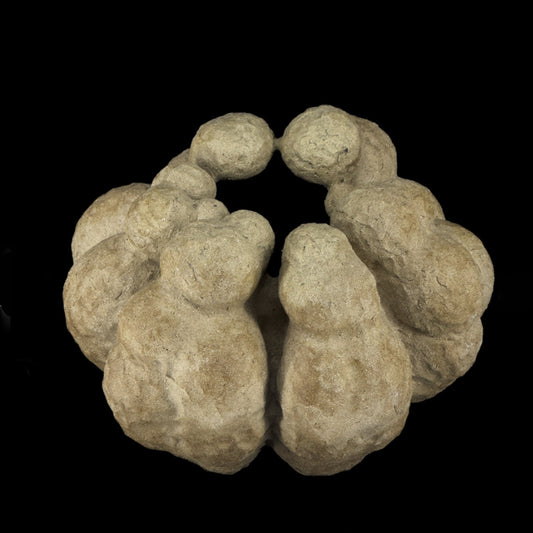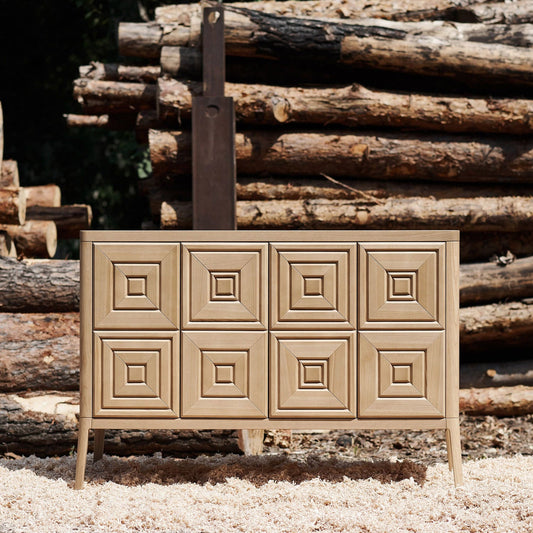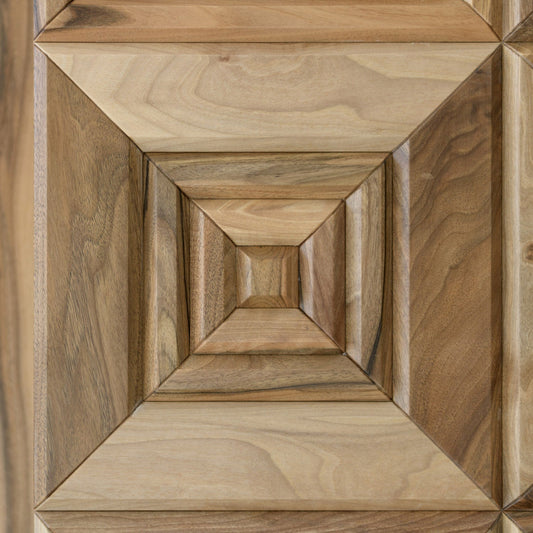2024 DESIGN TRENDS PART 3 – Ecological Values and Getting Back to Nature with a Splash of Understated Luxury
-
Our first two blogs explored the bolder design trends of 2024 with experimental design, colour and curves taking centre stage. Grounding us with a sense of ethical responsibility and calm serenity, we will continue to embrace our ecological values bringing design firmly back to its raw and natural beauty. There will be a desire to purchase naturally found materials with an emphasis on reducing carbon footprint. Taking it one step further, we can expect to see a mix of natural and luxury materials paired with their polar opposites, creating an air of understated opulence. Not surprising then that Italian design style will feature strongly this year with art and sculpture taking centre stage not just in the literal sense, but woven into the designs of our floor coverings, statement lighting and furniture collections.
-
With climate change at the forefront of the political arena, it’s no wonder sustainability remains high on the agenda. There is a desire to avoid making cheap furniture consigned to a short-life and a life sentence in landfill. We are rudely aware of our planet and its struggle for survival and are deeply conscious, not only of our personal ecological responsibilities but the urgency with which we must adopt them. With that in mind, our designers methodically source eco materials, and work hard to ensure that sustainability forms a large part of their design thinking.
-
Tasha Oro’s ideology, the driving force behind her work, addresses ethical consumption. Using existing artefacts including ceramics and vintage cars left over from the Soviet Era, she reimagines them into stunning pieces of sculpture and statement artwork. This not only saves them from landfill but gives them a completely new lease of life enabling her to express her values through her art.
-
Yalanzhi Objects ensure the manufacturing process for their statement lighting has low environmental impact. Using paper, derived from wood that has outlived its natural life, they transform natural materials into objects of beauty that are durable and long lasting. Low LED bulbs are used to helped reduce impact along with sustainable paint from Little Greene Company who are committed to protecting the environment. With virtually zero VOC, their organic paints are manufactured from the finest natural materials that are non-toxic and child-friendly.
-
-
Zv`yazani use natural wool fibres in their traditional hand-woven rugs. This controllable method of production has virtually zero waste and provides a more robust and durable finish.
-
-
- The Diza Collective philosophy includes sustainability in its design process by creating circular pieces of furniture that can be easily recycled, renewed, and repaired by making them transportable and convenient to store. Their ethos values multi-functionality to give their design pieces longevity ensuring continued use beyond their original format.
-
-
Perhaps the most unusual choice of natural material is the polypore fungus or commonly known wood mushroom. Naturally growing in the unspoilt Carpathian region, fungi are harvested to create Panoptikum’s highly unusual ‘mushrooms’ collection of furniture, an ingenious example of ecology at its finest.
-
-
To make the most of the Earth’s resources, natural materials continue to be favoured in 2024. Our designers use them to create their collections including ash, oak, walnut, stone, marble, travertine, clay and wool. As we have already seen, when it comes to wood, they prefer to opt for mature trees that have outlived their natural life.
-
Juxtaposition will be a predominant theme when it comes to mixing natural materials. A marriage of yin and yang will see us pairing natural and luxury components to create visually exciting contrasts. Take the warm pitted texture of natural wood grain against immaculately finished luxury copper or the highly polished surface of opulent stone, finished with the hard edge of industrial wrought iron. Combining strikingly different materials creates a relaxed approach with subtle touches of luxury.
-
We can see the attraction of opposites at work in the following examples:
-
The ‘DUALITY’ and ‘EDGE’ collections of Ilab.design whose sculptural creations made from luxury silver roots marble and the natural stone of the Breccia Pantifico, stand proud against the harder stainless steel, copper and brass accents. The contrast of stone and steel emphasises each material, highlighting its merits to take the designs to another level.
-
Ilab.design’s ‘VIYALO’ bar cabinet whose cold sculptural marble accents fashioned from Calacatta Calvia, Fior di Pesco and Negro Marquino, create a striking contrast with the warm, solid base of the American walnut veneer.
-
Panoptikum’s ‘NUT’ Collection whose ‘sphere’ coffee table made from walnut veneer is topped with painted blue glass to give it added depth or their ‘BUG’ collection whose solid teak base, scored with pyrography uses contrasting creations of brass trims, legs and hardware to give the design a quirky twist.
-
The stark contrast of cold pale stone and warm dark wood can be seen with the gently rounded coffee table ’Rocher’ from YourFoRest.
-
Or how about Panoptikum’s highly glossed ‘bubbles, hypnotically standing out against the solid matt cubes of the supporting cabinets.
-

DUALITY dining table
-

EDGE console
-

VIYALO bar cabinet
-

NUT coffee table
-

SPHERE coffee table
-

BUGS cabinet
-

Rocher coffee table
-

BUBBLES cabinet
-
When we think of understated opulence, our mind is transported to Italy. Italian design is truly classic. Rooted in history, it celebrates both art and sculpture and unashamedly reveres ancient architecture, celebrating naturally eroded facades, timeworn patinas and simple raw beauty. 2024 will see the influence of Italian design filtering into our home environment.
-
YourFoRest have embraced Italian influences with an inspired collection of furniture and wall panels including their ‘Pontelli’ and ‘Italy Classic’ range. These were the collaborative creations of Juanni Barcelò Borges, an Italian designer with Cuban origin, whose designs focus on transforming Italian art into contemporary form with multi-dimensional layers.
-
-
Examples of timeworn patinas can be seen in the following:
-
Gorn Ceramics painstakingly produce glaze effects that mimic decades of erosion as seen in their ‘Corals’ collection. Their ‘Flame’ collection created through regulating temperature control over a period of days, achieves the patina you would expect to find from the naturally scorched effect of the sun.
-
The ‘Actor’s House’, from The O range of wallpapers, which expertly captures the crumbling erosion of the ornate stucco decorations giving the building its unique character.
-

Corals
-

Flame
-

Actor's House
-
Sculpture and art, the foundation of Italian design, will feature heavily in our homes this year adorning our home décor and furniture.
We can see examples of this in the following:
-
The rug designs of Zv`yazani which can be customised to any chosen art piece.
-
The statement lighting and artwork of Yalanzhi Objects, a perfect example of which is ‘Marevo’ pendant sculpturally designed to resemble enveloping fog that plays with the light.
-
The marble furniture collection of Ilab.Designs with their circular fluted fanning seen in the magnificent ‘VIYALO’ wall panel, the the sculptural designs of the ‘DUALITY’ console table stunning us with its solid and powerful geometric shape and the dominant arches of their ‘PERSPECTYVA’ sculpture, a classic Italian design.
-
Art is strongly embodied into all of Panoptikum’s design concepts which are unique art forms in themselves, already seen with their ‘Bugs’, ‘Bubbles’, ‘Eggs’ and ‘Nut’ collection. Panoptikum’s ‘Break Free’ collection expertly reproduces the effect of crumbling concrete with its asymmetrically broken surfaces designed to portray the physical emotion of force hacked into the surface as a symbol of rebellion.
-

Rug POMEGRANATE
-

Pendant lamp MAREVO
-

Wall panel VIYALO
-

Console DUALITY
-

Sculpture PERSPECTYVA
-

Cabinet BUGS
-

Bedside table BUBBLES
-

Cabinet EGGS
-

Coffee table NUT
-

Bedside table BREAKFREE
-
Much like the symbol of the tree, Ukrainian Product Design’s conscious roots lie firmly in nature with a commitment to ecological preservation. Their branches however tower far into the future, constantly pushing the boundaries in experimentation, innovation, and cutting-edge design.
-
The USAID Competitive Economy Program in Ukraine (USAID CEP) supports startups, small and medium enterprises (SMEs) aiming to provide support for competitive industries and firms on Ukrainian and international markets, foster a better business-enabling environment and enable Ukrainian companies to benefit from international trade.
The items used in the project
-
AR wallpapers Actor's House
Regular price £67.00 GBP per 1 sq. meterRegular priceUnit price per -
Ceramic Vase Earth Corals
Regular price £337.00 GBPRegular priceUnit price per -
Sideboard Gelato
Regular price From £7,310.00 GBPRegular priceUnit price per -
Wall Panel Italy Classic
Regular price From £990.00 GBP per 1 sq. meterRegular priceUnit price per
